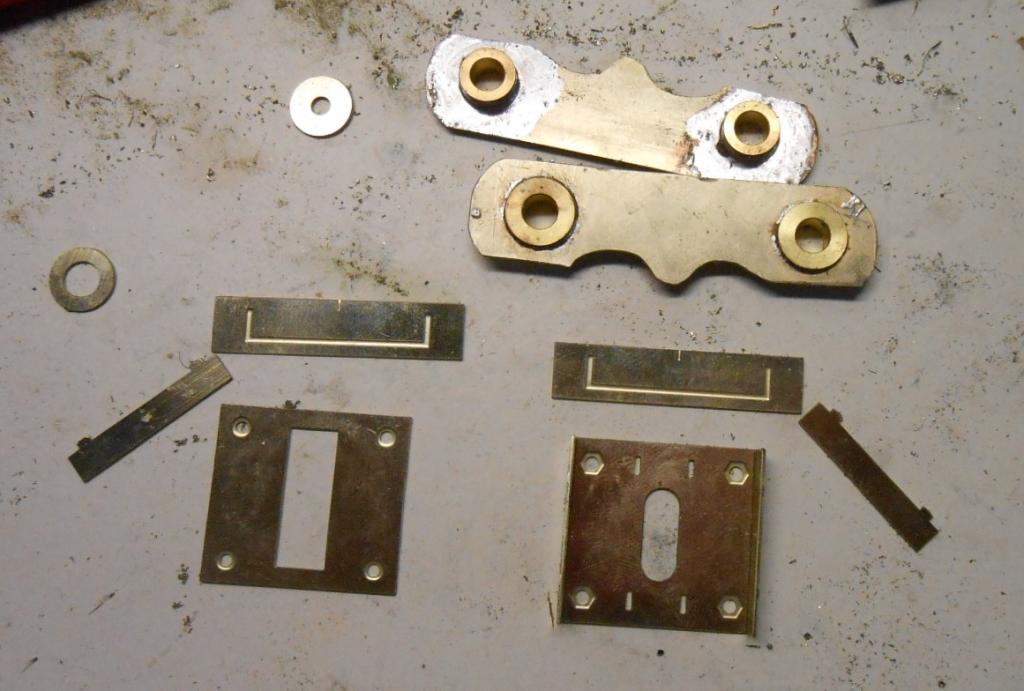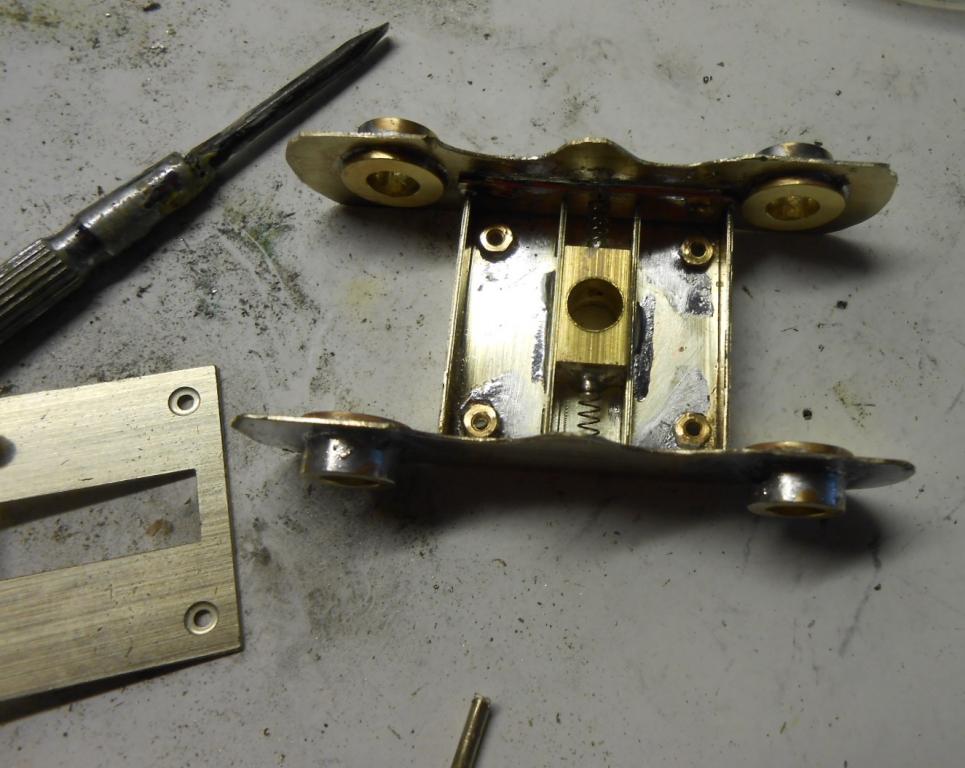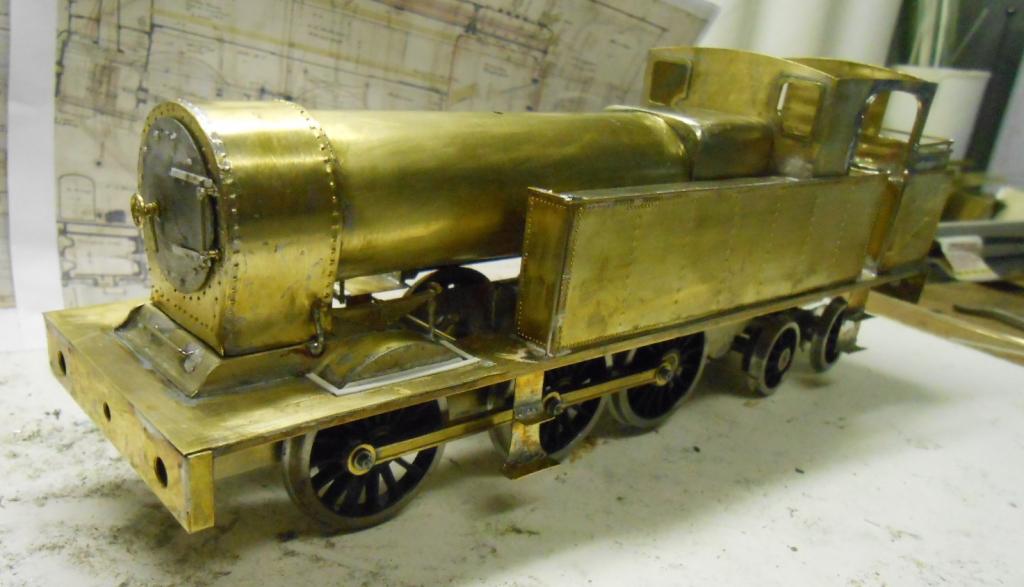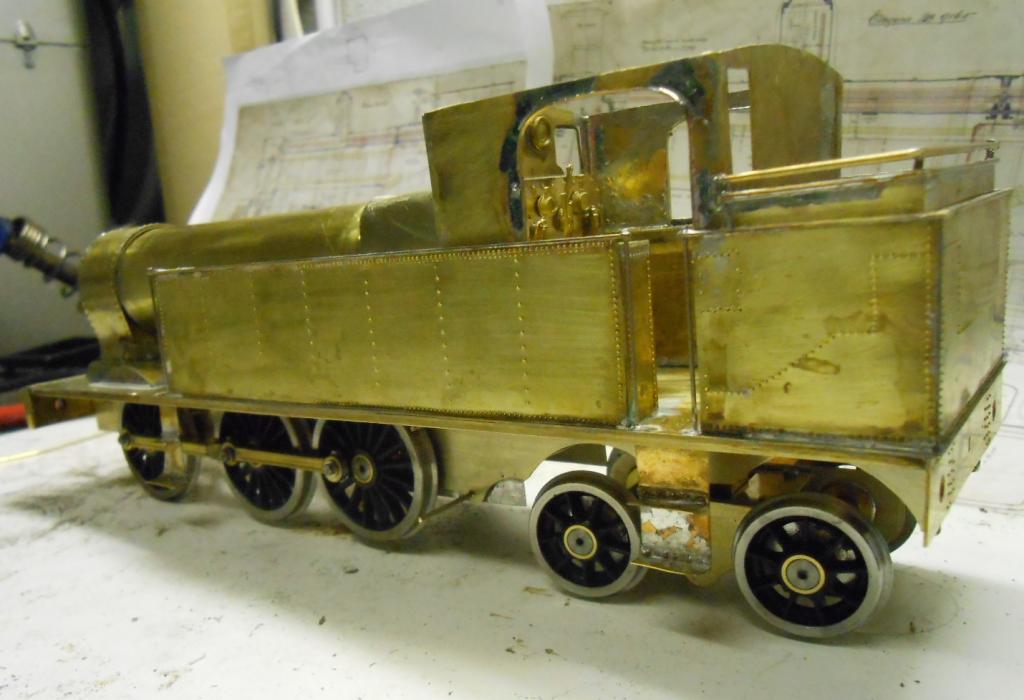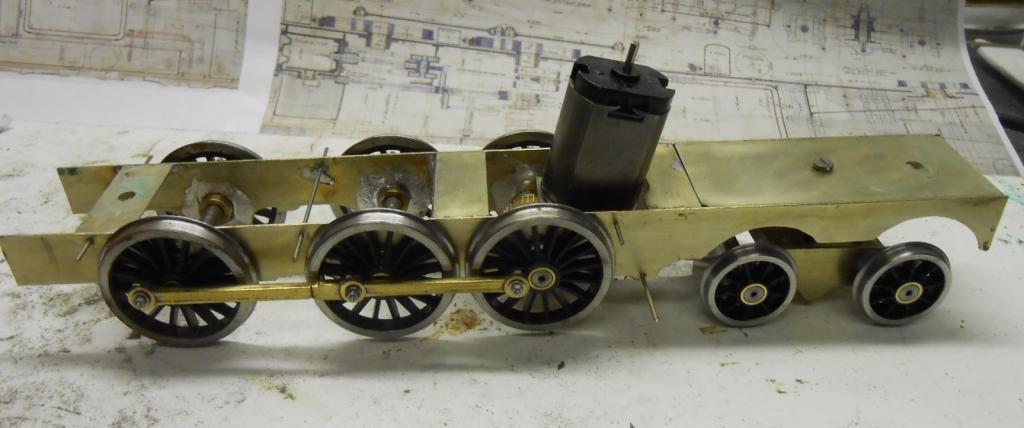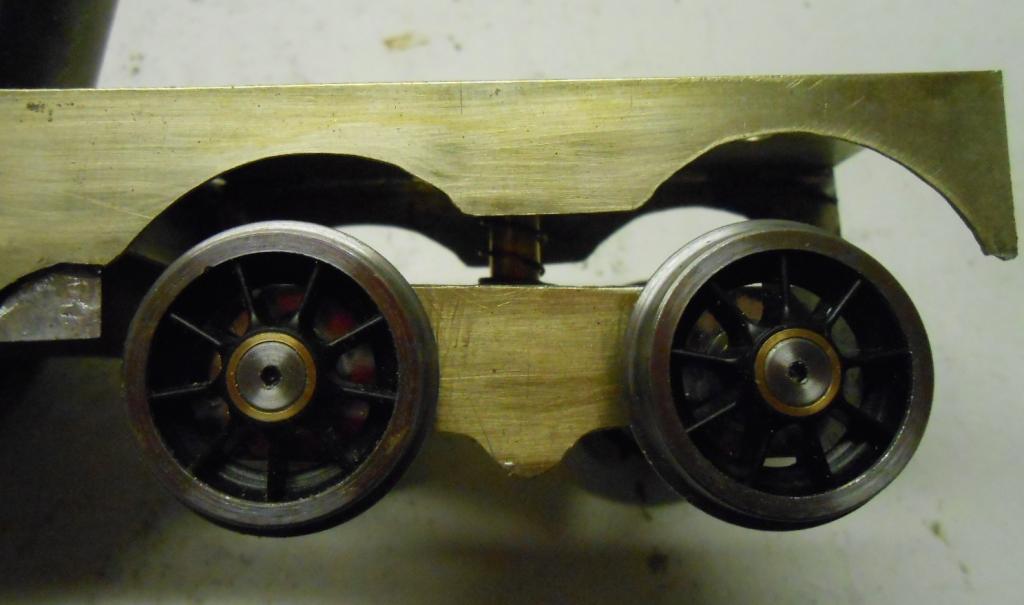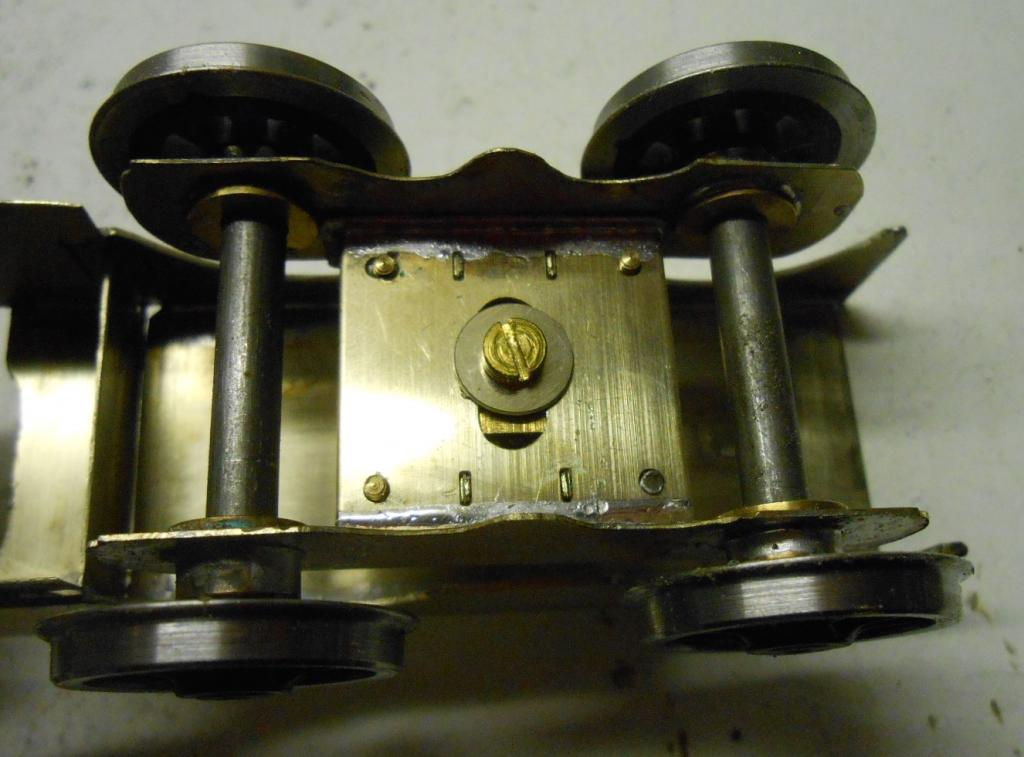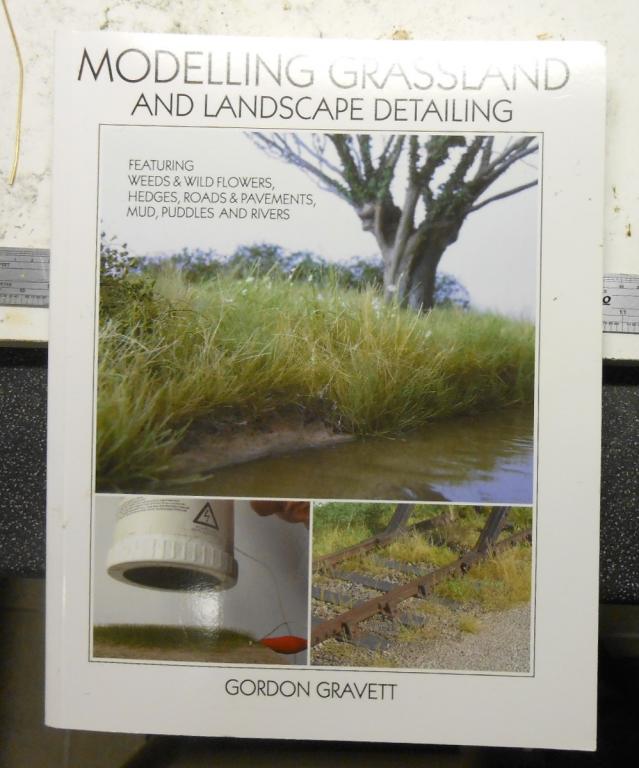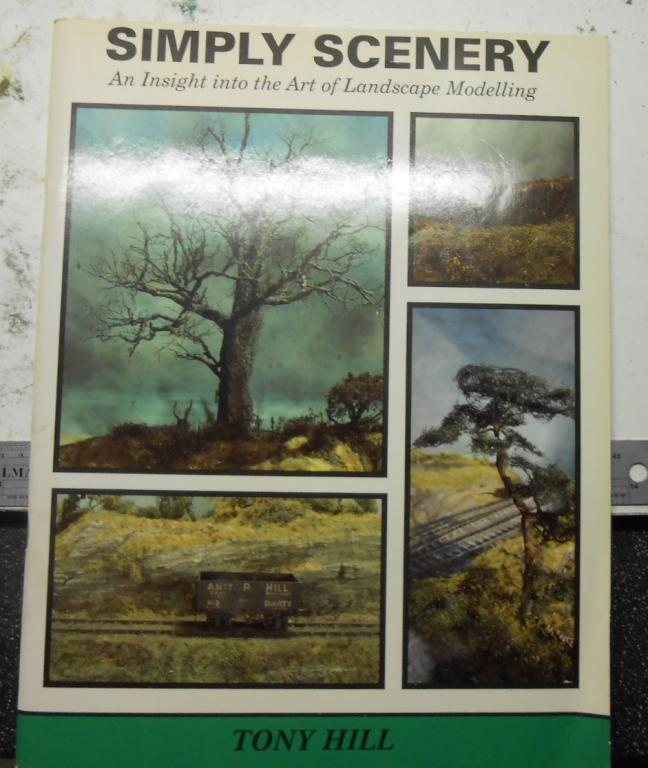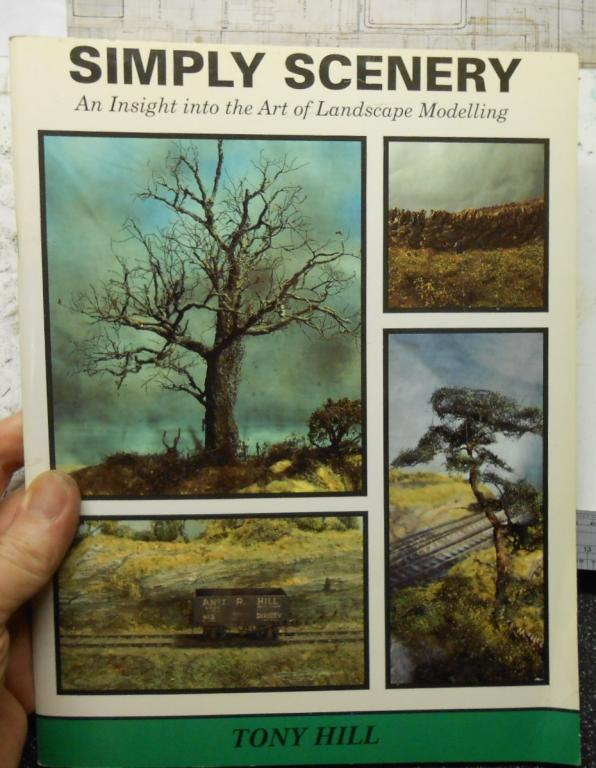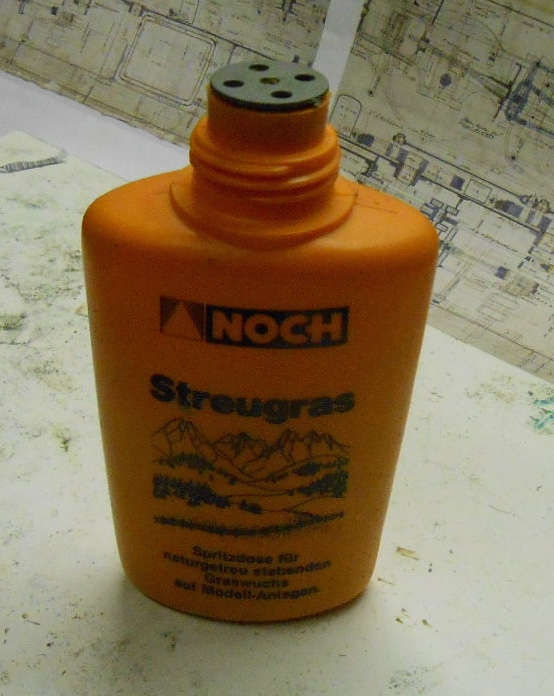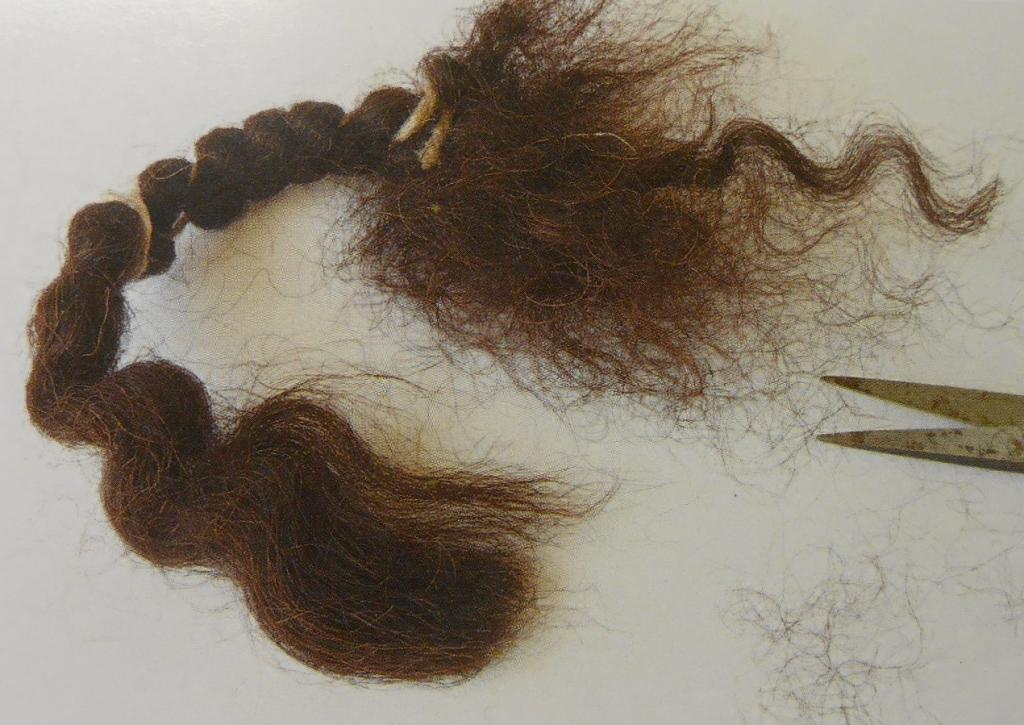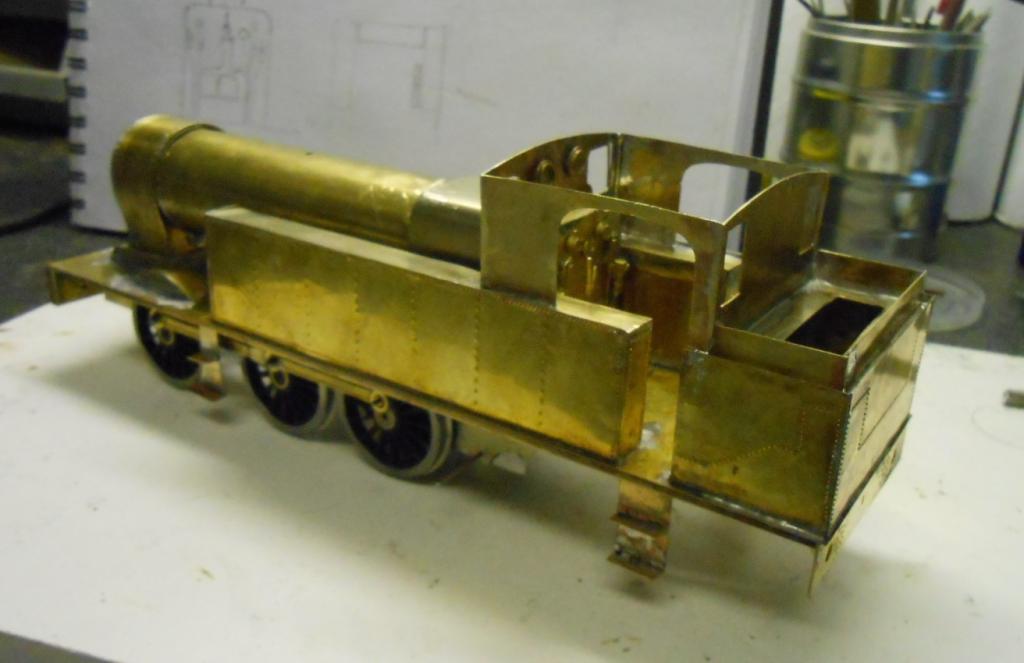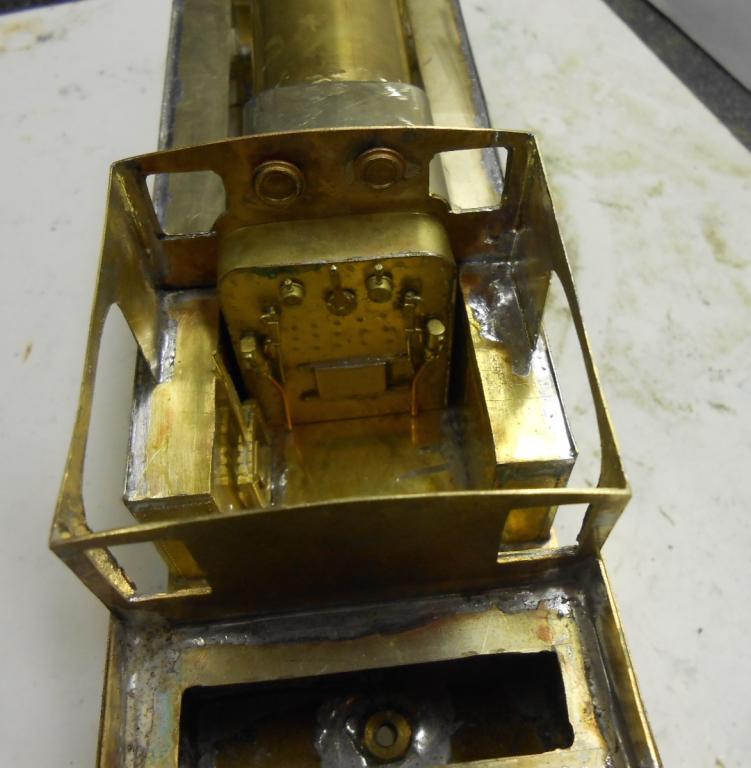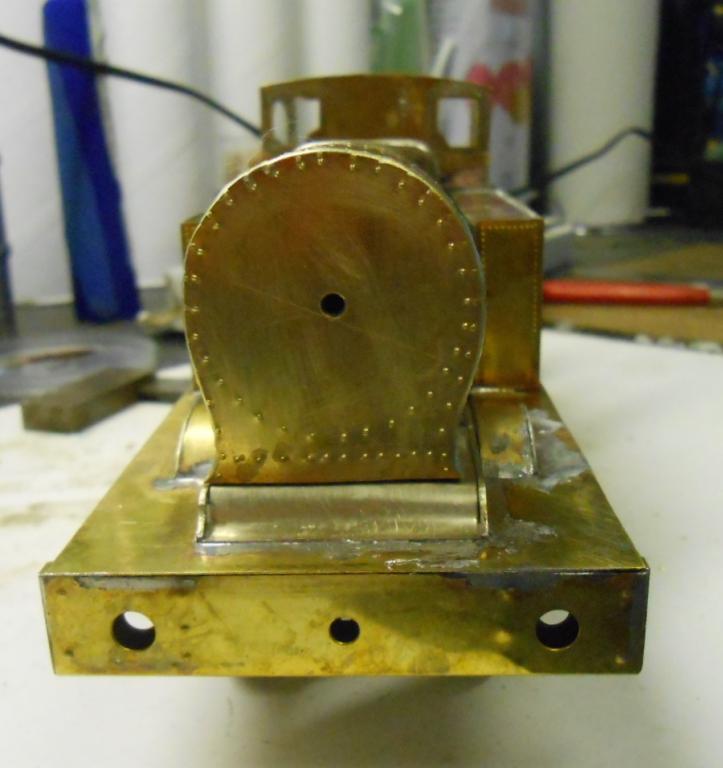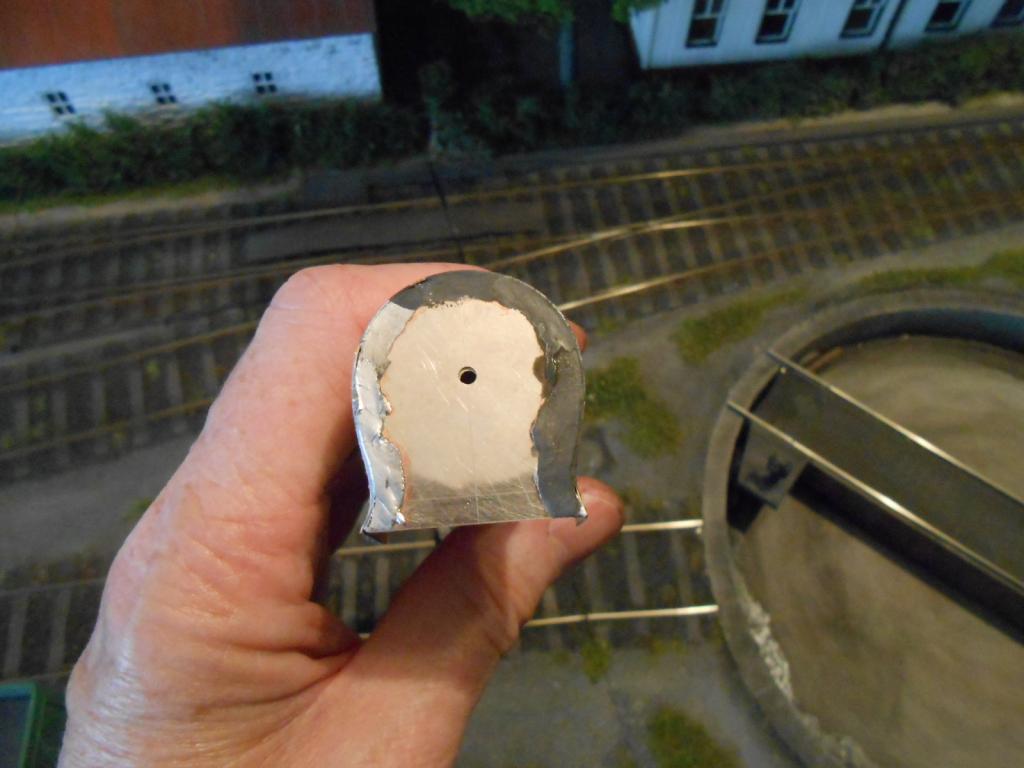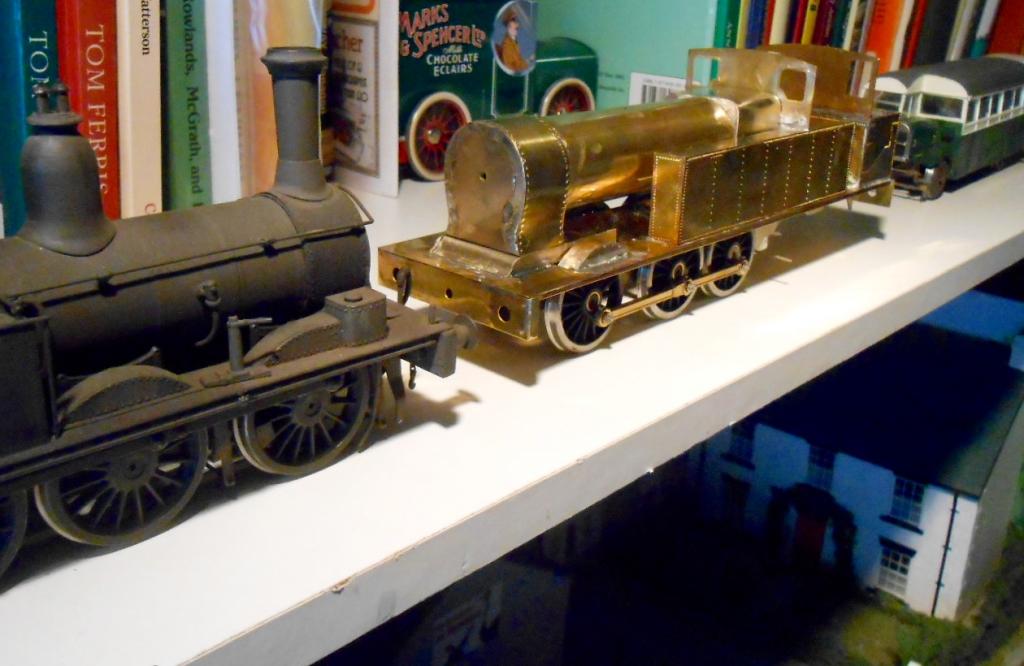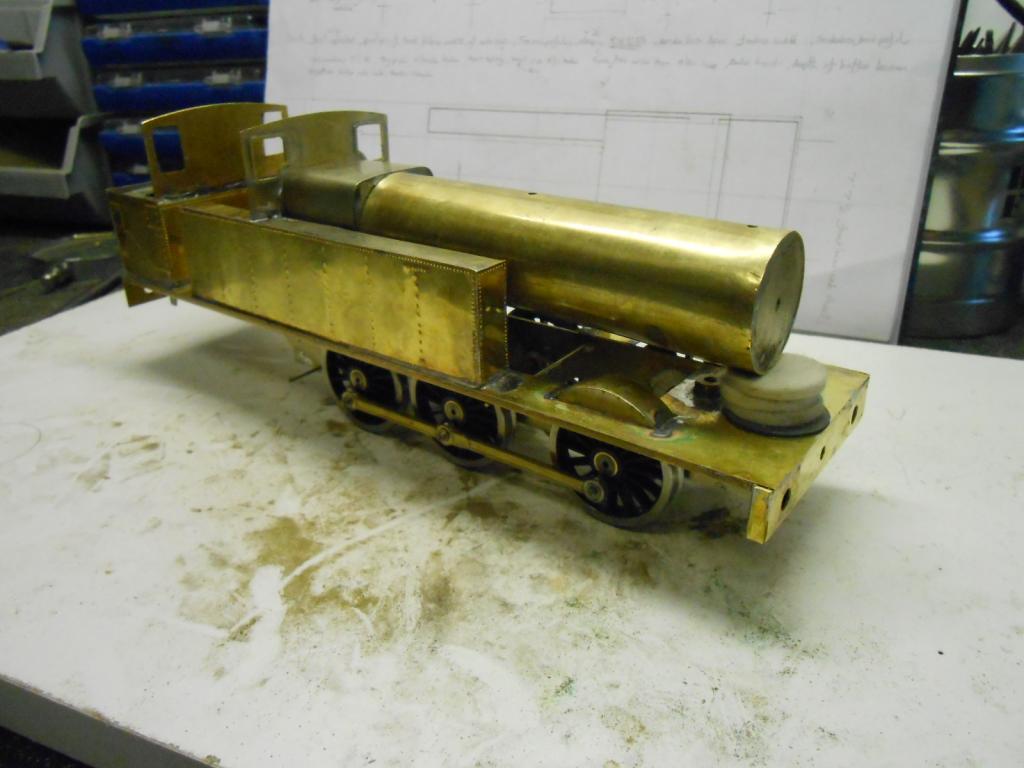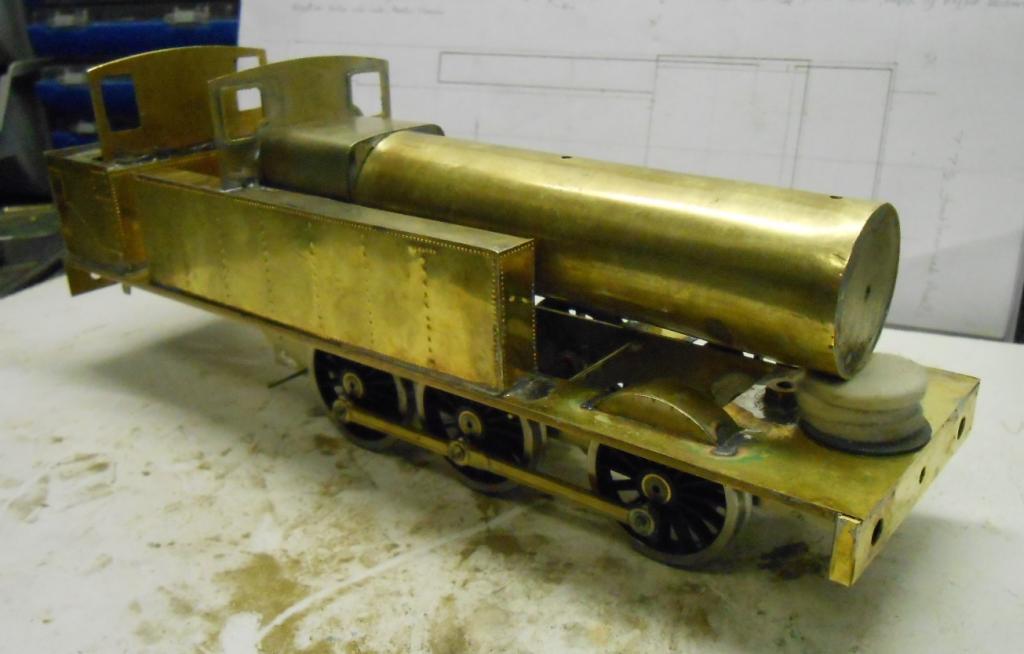
David Holman
Members-
Posts
4,359 -
Joined
-
Last visited
-
Days Won
117
Content Type
Profiles
Forums
Events
Gallery
Everything posted by David Holman
-
More Klingon [in my dreams], than Viking... not sure there are many 'warrior' railway modellers out there!
-
I believe the kit is now marketed by Gladiator Models, Eoin. Don't envy you on the Scotsman - a serious amount of work, even without the flaws! Am hoping to fit working inside valve to Sir Henry. fingers crossed a Laurie Griffin Miniatures kit will do the job. At least there is decent room between the frames. Time was, you could call yourself a real man just by doing outside Walschaerts, now Ballyconnel Road locos have inside valve gear in 3mm scale...
-
Went to Expo Narrow Gauge last Saturday & with Branchlines there, was able to get a motor gearbox. This one is an 1833 with 40:1 gears. Assembly is a matter of minutes and as luck would have it, the unit fits neatly inside Sir Henry's firebox. While I was on the chassis [and because I'd ordered the bogie wheels from Slater's], I had a go at the bogie unit. I'd bought a Northstar equalised unit ages ago for a 4-4-0 I was building, but ended up not using it.A standard gauge version, I took the easy way out and did a 'Tyrconnel' - in other words, soldered the bearings in back to front to take the longer axles. It is one of those additions that is seriously clever, giving both lateral and vertical springing. Will need to shorten the main spring a little I think, as it is currently a bit too strong. however, will wait until the loco is nearly finished as the eventual extra weight may not require it. The other pictures show additional work on the superstructure which includes beading on tanks, bunker and cab [always tricky], the smokebox door, steps and bunkers rails. The 'to do' list doesn't seem to be getting any shorter though!
-
Looking good so far.
-
Re the recent thread on scenics, I thought I’d offer my own take on the subject & show you what I do. In fact, there is very little innovation in my work, more a case of pointing towards what I have learned from others. For me, there are three key names – Barry Norman, Tony Hill and Gordon Gravett. The books illustrated are in effect the bibles of scenic modelling. Barry’s came first, in 1985, following the launch of Petherick on the exhibition circuit. This was an EM gauge layout, set in Cornwall and at the time revolutionised what we did with scenic and [should have anyway] spelled the death knell of dyed sawdust, in favour of lint and plumbers hemp, among other things. Next came Tony’s book in 1995, which made the most of the newer materials available from Woodlands and the like – mainly scatter foams, plus stuff like teddy bear fur – while Gordon’s work is the most recent and takes advantage of the latest static grass machines, while refining earlier techniques in the search of ever greater realism. Lesson number one should therefore be to get hold of one or all of these books, for each of them makes realistic scenery achievable by anyone with a bit of time and some careful observation. All the books cover how to build scenic foundations, but to be honest, almost anything will do, as long as whatever shapes your landscape is covered by a mixture of filler, PVA glue and browny grey poster paint. Flat baseboards can be built up with card, card, polystyrene tiles or whatever. Papier mache works ok, though make sure surfaces are sealed first, or the moisture can cause warping. Open top boards can use chicken wire, cardboard weave etc. Either way, the PVA/filler mix gives a smooth, hard surface on top, while with paint mixed in, should you get any chips, no white patches show through. Tools For 4mm scale and above, there is no escaping the fact that an electrostatic grass machine is not just a luxury these days. The effects are wonderful and the time saving enormous. Top of the range models, like my Green Scene version [now marketed as a ‘Flock It’] cost well over 100 euros. Cheaper versions, like the one based on a flour sifter are around a third of the price, while the Noch puffer bottles still have their uses and are very cheap indeed. You could make your own of course, but only if you know what you are doing… Materials If using an electrostatic machine, then fibres are required. These come in 1-12mm lengths, the shorter ones best in the smaller scales, but all have their uses in the larger scales. Colurs are VERY important. Grass [the main use for fibres], is rarely bright green – even on a soft day in Ireland! Sorry chaps, but some of the layout threads show some pretty vibrant/virulent, bilious even, shades. Real grass ain’t that bright. Hence go for beige and straw like colours and mix liberally with your less bright greens, because another key fault people make is using just a single colour. Forty shades of green came well before 50 shades of grey methinks! As my art teacher explained, paint what you see, not what you think, so good colour photos are essential in capturing the feel of the area you want to model. Think about the time of year too. Autumn has to be the hardest – witness some pretty hideous efforts in the model press – because the subtle blend of colours required almost always end up too bright. Spring greens are obviously the brightest, but by late June, things are starting to dry out, with many more lighter shades coming through. Geology has an effect on the flora too, so study your chosen area carefully and aim to copy what it displays. Remember too, that colours fade as you go into the background – especially important when doing backscenes. ‘Crumb’ or scatter is still important to enhance static grass fibres and a decent substitute if you don’t want to go to that expense. My personal preference is for Woodland Scenics. Fine and medium textures work best for me and following Gordon Gravett’s advice, I generally put a layer of these down first, before adding fibres on top. Other brands of scatter can be both too coarse and/or too grainy, I find, but again, never be afraid to mix both colours and media. Nature is not monochrome. Save the darker shades for trees and bushes – next time you go out, notice how these are always darker than surrounding grassland. Various thicker fibres, dried flower heads etc are very useful for making smaller plants and shrubs, so it is worth having a small stock in hand. Likewise the Woodland Scenics fibre matting. Sold with their tree kits, it can also be bought separately and has many uses for bushes, brambles etc. My other ‘must have’ is Postiche. A type of artificial hair, it can be teased out to make even finer matting than the Woodlands type & as such has many uses. The Chatham Club is busy with scenic work at the moment, so will aim to add to this thread as our work develops and show you what goes on.
-
I have always laid my track on cork. I use the 3mm thick floor tiles, sold in DIY emporia. They enable you to create the all important ballast shoulder for main lines, while in stations I simply cover the whole area. Once upon a time, self-adhesive ones could be bought, which helped with the laying, but these days it is usually a case to out with the PVA glue and pin them down firmly while it dries. As others have indicated, the amount of sound insulation is limited and it is doubtful whether cork offers any improvement to running quality. However, working in 7mm scale, I do not find my models are noisy, despite being heavy and often all metal. Equally, Arigna Town is a branch terminus, so does not have the effect of a long train running round a circuit, where I guess the noise can build up considerably. On my last branch terminus, I used Tortoise point motors and the hum from these far outweighed the noise of a train; yet out at exhibitions, the points motor noise was rarely heard above the background noise...
-
There is a growing sense of delicacy and subtleness to your work, Nelson. The change to three link couplings certainly helps, but there is real finesse in that wagon - sharp lines, no evidence of glue/solvent. Stands up for itself even before it is painted. Proper job.
-
Since unloading the layout after Beckenham, have had two decent day's worth of modelling time. First up was the smokebox front. Picture shows the second attempt, though still not sure the rivets are right - the outer ring is a bit too close to the edge for comfort... It looks off centre too, but fear not, as it is not fixed down yet. A small job was tidying up the rear edge of the upper frames, so they match the profile of the splashers, likewise rounding off the front corners of the Belpaire firebox. Slightly more involved was the cab and bunker area. Began by adding the upper bunker sides [10 thou brass, as usual], then cut out a pair of blanks for the cab sides. These were soldered together before the shape was cut & filed to what I hope is a decent profile. Fiddliest of all were the four steps. Simple in shape, but the riveted strips above each step, made soldering tricky, so glad when these were done. Lastly, in this burst of activity, was the 'back head' [firebox rear]. Cut a sheet of thicker brass to the same profile as the footplate section, then marked out where the main controls would be. Used pictures from the Web to give an impression, but no idea if accurate for a Large Tank. The Tyrconnel G2 helped too - being a Beyer Peacock loco, as did Hazlewood. Des at Studio Scale Models was very kind in selling me a pack of castings from the Small Tank kit. These included water gauge glasses, injectors, pressure gauges, regulator & reversing levers, plus a brake standard. Also on the sprues were a smokebox door wheel and a couple of other useful items, so many thanks, Des! The basic structure of the loco is now complete, apart from the bogie, so next step will be a thorough clean up before I start adding the details. As you can see, i am not the neatest when it comes to soldering, so seems a good idea to get things tidied up before bits like beading, and castings go on. If anyone can tell me what the correct chimney and dome for a Large Tank in the 1950s should be and more particular where I can buy them, I will be very grateful.
-
Super video - the running qualities of the whole layout are very impressive. Must be a pleasure to operate. Love the blue & cream DMU too. Was there a more handsome prototype & why is it that DMUs are always so much more attractive in model form than [most of] the real thing?
-
Rachelstown and St Stephens Green
David Holman replied to The Derry Road's topic in Irish Model Layouts
Well done you. Signals add so much to a layout & can be daunting things to build. Just as well you are not using semaphores... -
Ulster Folk & Transport Museum 2015.
David Holman replied to popeye's topic in Photos & Videos of the Prototype
Shocking in some ways, JB. I'm one of those folk who trust museums to get things right - though as you say, colour is such a difficult area. One wonders if some of the bikes, cars etc are the wrong colour as well. Brings to mind the old quote of 'apart from that, Mrs Lincoln, how was the show?'.... -
Ulster Folk & Transport Museum 2015.
David Holman replied to popeye's topic in Photos & Videos of the Prototype
Went a couple of years ago & like Weshty, found taking photos difficult, so well done with these - they are much better than my efforts. Did do a lot of detail stuff on Donegal Railcar 10 though. One day... Cultra must be one of the finest museums anywhere, regardless of content. Interesting that the spell checker wants it to be 'Culture' & certainly better than 'Swanky' instead of Swanley for the ExpoNG venue! -
Arigna Town - this week's scenery
David Holman replied to David Holman's topic in Irish Model Layouts
Stunning - thanks Eoin, am sure I'll not be the only one to enjoy this. Immediately identifies two things missing from my layout - litter and a line side donkey! The first not too difficult, the second will have to wait until the Reading Trade Show in December, though might be something at ExpoNG next week in Swanley. Not sure how I mimic children running alongside the train though. Anyone doing holographic projections yet??? -
Maybe... Several Irish railways used 'off the shelf' signalling - usually Saxby & Farmer. Is there anything available in model form from that prototype?
-
-
Just seen your reply Eoin. Went to the workshop and did a test. Not only successful, but seems to work quicker on solder than clean brass or nickel silver. The effect is almost instant too, whereas brass & nickel need up to 20 seconds before neutralising with water. Like you, I've used Carrs metal black, but gun blue is much better.
-
4mm scale 'WT' rebuild from a Fowler 2-6-4T
David Holman replied to Richard EH's topic in Irish Models
Mmmmm, I am no expert, but that really does look the part. Great work. -
Many thanks, as ever JB. Methinks the fans might just stay on a while and drown their sorrows. A brave effort, which is more than can be said for my lot. However, having transferred my allegiance to Ireland, who should I follow next & put the curse on???
-
Re recent chat on cleaning/blackening, I've bottle of Birchwood Casey Gun Blue which I've been using for years as a blackener. Better than the Carr's stuff in my experience - I believe it is essentially selenium dioxide. Applied with a cotton bud, it works in seconds and is neutralised with tap water. Works a treat, but never tried it on chips... Sir Henry has progressed quite well to the smokebox phase. The latter is essentially two layers of 10 thou brass, the top one riveted appropriately. A nickel silver blank was shaped for the smokebox front & the whole unit sits on a saddle made from more 10 thou strip & bits. At this stage, it seems like the project is going fine, until I made a list of what needs doing. Counting brake gear as 6 separate items for example, there are still over 100 jobs to do & that is before cleaning up, painting & weathering. By the by ,just been to the Uckfield Show - easily the best of its kind in SE England - where I boughtNorman Johnson's last book 'Parting Shot'. Excellent. Interesting to see that a caption of one photo of the last SLNCR 0-6-4Ts says they were the final incarnation of the classic 'long boiler' locos [firebox behind the drivers], built nearly 100 years after they had gone out of date anywhere else! Sir Henry might have to take a bit of a back seat for a bit. The Beckenham Show is next week, plus I need to order a few bits/materials to move the project on again.
-
Am sure we will all look forward to seeing the silk purse emerge from the sow's ear! As you say, there is a definite pleasure is making something better, especially if it runs well too.
-
Wow, strong stuff indeed!
-
Interesting, thanks Eoin. Presumably, by pickling mixture, you mean vinegar? Tis the chutney season in our house at the moment, courtesy of the quince tree in the garden. Hence the place reeks. Must find a nice big [empty] jar.
-
Welcome to the hobby - hopefully you will find it as rewarding as the rest of us. One slight caution. Many a modelling project has fallen foul of starting too big. Just because you have 4m x 3m doesn't mean you have to fill it all immediately. A smaller project [eg a 2m x 0.5m loco depot] will enable you to develop skills, make mistakes [though we all keep doing those] and have something finished in a reasonably short time. Design it so it could fit into the larger project and time is not wasted. Equally by then, you find your interests have changed, but it will still be good experience.
-
The last few days have seen the tank sides soldered in place. Eight pieces in all - outer & inner sides, plus front and rear sections. These were assembled first, then the cab front was cut to fit in between the two tanks. Also added a top to the bunker, which still needs a further set of sides fitting, plus the bunker front, inside the cab. This should have a hole for the fireman to shovel the coal, but it will be hidden by the crew [once fitted], so have decided to save myself the trouble... A good wash came next, to clean off the flux [or the metalwork soon goes green] & then it was time to sit back and decide what needed to come next. At the moment, I'm concentrating on getting the superstructure built & will go back to fitting details once the general outline is completed. This was a good time to remind myself that, though the model is taking shape, there is still a long way to go! To help with painting, have decided to make the boiler/firebox/smokebox unit removable. The boiler is actually the etch from my first Small Tank [Hazlewood]. I'd replaced it on the latter with a piece of copper pipe - right diameter, but almost impossible to solder anything too as it was a thick old bit of metal. Now, a Small Tank's boiler is smaller than Sir Henry's, but most of it is hidden between the longer side tanks. Hence a current gap at the bottom will be covered with a fillet of brass & the joint made good with some judicious filing. Waste not, want not. As it is you'll see that a mix of nickel silver and brass is being used for the superstructure, simply because I'm starting to run out of sheet metal. The firebox is nickel, I cut two end blanks from 18thou sheet and soldered a ten thou wrapper around them. The second attempt was much better than the first! End blanks for the boiler were also cut from thicker nickel. I used a puch to mark the centre of two circles, then scribed these with a compass, before cutting out with a slitting disc in the Dremel. These were filed to shape with a grinding disc [again in the Dremel], then I drilled through both so I could bolt them together [8BA] and file to shape in my pillar drill. There are centre holes in the fire box front/rear, plus the cab front. This means I can use 8BA nuts and bolts to assemble the boiler/firebox to the cab front. The firebox and boiler were also bolted together, prior to making a solder joint. As you can see from the photos, the boiler front rests on some polishing pads, to allow me to check alignments. At this stage, everything looks a bit anorexic & I'm constantly remeasuring clearances. Not so much a case of measure twice, cut once, as act in haste, repent at leisure. Forgot to mention the front splashers. Hate doing these things, even on a kit, as they are awkward soandsos to fit. Use 240 solder to fit the outer faces and 145 solder to fix the tops. These are 10 thou brass. Easy to shape, but finger singeing to fix... I'm sure you've spotted the dent in the boiler, worry not, it will be covered by the smokebox wrapper, which is the next item on the list.
-
Progressing well & should certainly be a nice runner with that chassis. A bit quicker than an etched kit methinks[!], but resin is the ideal medium for the complex shapes of diesel locos. Will look forward to seeing the paint job.
.png.c363cdf5c3fb7955cd92a55eb6dbbae0.png)
